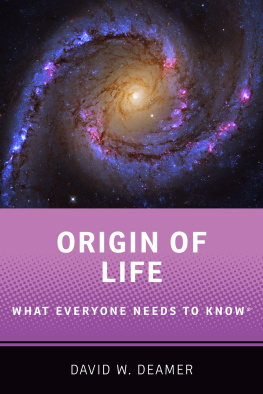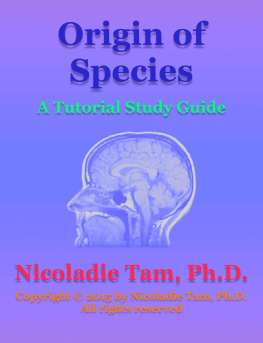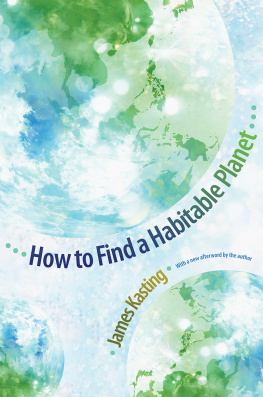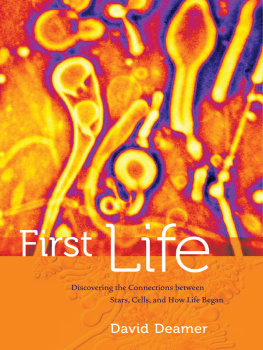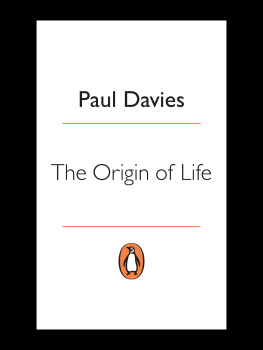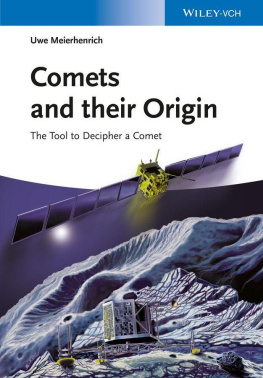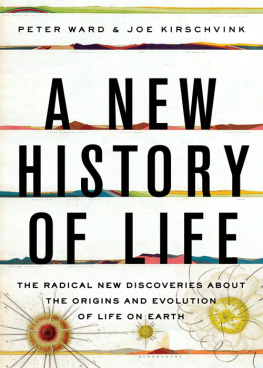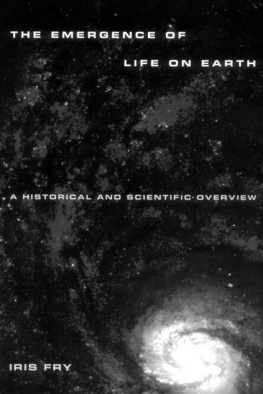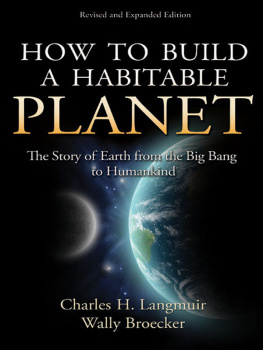Origin of Life

Oxford University Press is a department of the University of Oxford. It furthers the Universitys objective of excellence in research, scholarship, and education by publishing worldwide. Oxford is a registered trade mark of Oxford University Press in the UK and certain other countries.
What Everyone Needs to Know is a registered trademark of Oxford University Press.
Published in the United States of America by Oxford University Press
198 Madison Avenue, New York, NY 10016, United States of America.
Oxford University Press 2020
All rights reserved. No part of this publication may be reproduced, stored in a retrieval system, or transmitted, in any form or by any means, without the prior permission in writing of Oxford University Press, or as expressly permitted by law, by license, or under terms agreed with the appropriate reproduction rights organization. Inquiries concerning reproduction outside the scope of the above should be sent to the Rights Department, Oxford University Press, at the address above.
You must not circulate this work in any other form and you must impose this same condition on any acquirer.
Library of Congress Cataloging-in-Publication Data
Names: Deamer, David W., 1939 author.
Title: Origin of life : what everyone needs to know / by David Deamer.
Description: New York, NY : Oxford University Press, [2020] |
Series: What everyone needs to know | Includes bibliographical references and index.
Identifiers: LCCN 2020003142 (print) | LCCN 2020003143 (ebook) |
ISBN 9780190098995 (hardback) | ISBN 9780190099008 (paperback) |
ISBN 9780190099022 (epub) | ISBN 9780190099015 (updf)
Subjects: LCSH: LifeOrigin.
Classification: LCC QH325 .D425 2019 (print) | LCC QH325 (ebook) |
DDC 576.8dc23
LC record available at https://lccn.loc.gov/2020003142
LC ebook record available at https://lccn.loc.gov/2020003143
Contents
Ill begin with a challenging question: Why should anyone want to know about the origin of life? The answers will vary from one person to the next, but the simplest answer is curiosity. Anyone reading this introduction is curious because they wonder how life could have begun on the Earth, but there is more to it than that. My friend Stuart Kauffman wrote a book titled At Home in the Universe. The title refers to a deep sense of satisfaction that comes when we begin to understand how our lives on Earth are connected to the rest of the universe. There are surprises and revelations as we discover those connections. For instance, living cells are mostly composed of just six elements. As you read further in the book, you discover that the hydrogen atoms in your body are 13.8 billion years old, as old as the universe, and the rest of the atoms were synthesized in stars over five billion years ago. Life on Earth borrows those atoms from the universe for a brief time and then gives them back.
Then there is a practical consideration. Curiosity-driven research can satisfy scientific curiosity, but the discoveries we make sometimes have valuable spinoffs. My own experience in this regard was an attempt to make a laboratory model of a primitive cell. I needed to find a way to get a molecule called adenosine triphosphate (ATP) through membranes so that enzymes encapsulated in lipid vesicles would have a source of energy to synthesize ribonucleic acid (RNA). Asking that question and finding an answer a few years later led to a method called nanopore sequencing of deoxyribonucleic acid (DNA), and commercial instruments that incorporate the original idea are now being manufactured. The cycle of discovery and invention is now coming full circle back to basic research because nanopore devices are being developed that will search for life elsewhere in the solar system.
Astrobiology helps us understand how life can begin
The first speculations about how life can begin on Earth were published in a Russian language book by Alexander Oparin in 1924, followed by J. B. S. Haldanes brief essay in 1929. Both concluded that lifes origin can be understood in terms of chemistry, and this view has guided research ever since. However, a newly emerged discipline called astrobiology expanded our perspective beyond the Earth and its biosphere. Astrobiology builds on ever-increasing knowledge of how planets, stars, galaxies, and even the universe began. We now have a pretty good idea how the Earth became a habitable planet and why life is likely to be distributed throughout our galaxy with its 150 billion stars and planets, some of them surely habitable.
There are many pieces to the puzzle of how life can begin, and many ways to put them together into a big picture. Some of the pieces are firmly established by the laws of chemistry and physics. Others are best guesses about what the Earth was like four billion years ago, based on reasonable extrapolations of what we know by observing todays Earth and other planets in the solar system. There are still major gaps in our knowledge, and this is where scientists can have radically different opinions about plausibility. For instance, which came first: Metabolism or genes? Proteins or nucleic acids? Most will agree that liquid water was necessary, but was it in a hydrothermal submarine setting in seawater or a freshwater site associated with emerging land masses? Lets first consider how scientists working on such problems try to find answers.
What is the difference between an idea, a conjecture, a hypothesis, and a theory?
Everyone has ideas, and theres an old saying that ideas are a dime a dozen. The reason ideas are so common is that people generally enjoy pondering questions and coming up with possible answers. A conjecture is a fancy name for a complicated idea that attempts to explain something specific. Even though a conjecture might sound reasonable, it probably does not have a solid foundation of facts. In his book Life on the Mississippi Mark Twain wrote, There is something fascinating about science. One gets such wholesale returns of conjecture out of such a trifling investment of fact. Twains insight strikes close to home when it comes to the origin of life: few facts and lots of conjecture. On the other hand, Twain was a great writer but he was not a scientist. During his lifetime, a few pioneering scientists were beginning to explore physics and chemistry using a tool called the scientific method.
What is the scientific method?
In high school, most of us learn about the scientific method, typically defined as a process involving five steps: 1. Make observations. 2. Perceive an interesting question. 3. Propose a hypothesis. 4. Test the hypothesis experimentally or by further observations. 5. On the basis of the positive or negative results, decide whether the hypothesis is correct, or at least has explanatory power. If the explanation is significant, repeatable by others and reaches a consensus, the hypothesis becomes a theory.
This sounds like a reasonable way to understand the world we live in, but in real life the process is quite a bit messier, at least for origins of life research. There is so much we dont understand that each researcher has only a vague idea of the big picture, and their ideas often contradict the ideas of other researchers. What we do know with certainty is that the origin of life occurred within the framework of the immutable laws of physics and chemistry, so the goal of science is to use those laws to fill in the vast gaps in our knowledge and perhaps someday to understand how life can begin.

